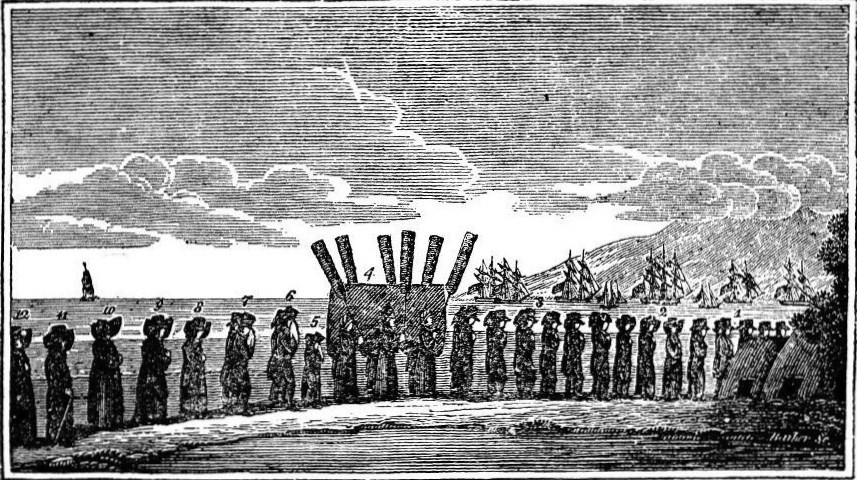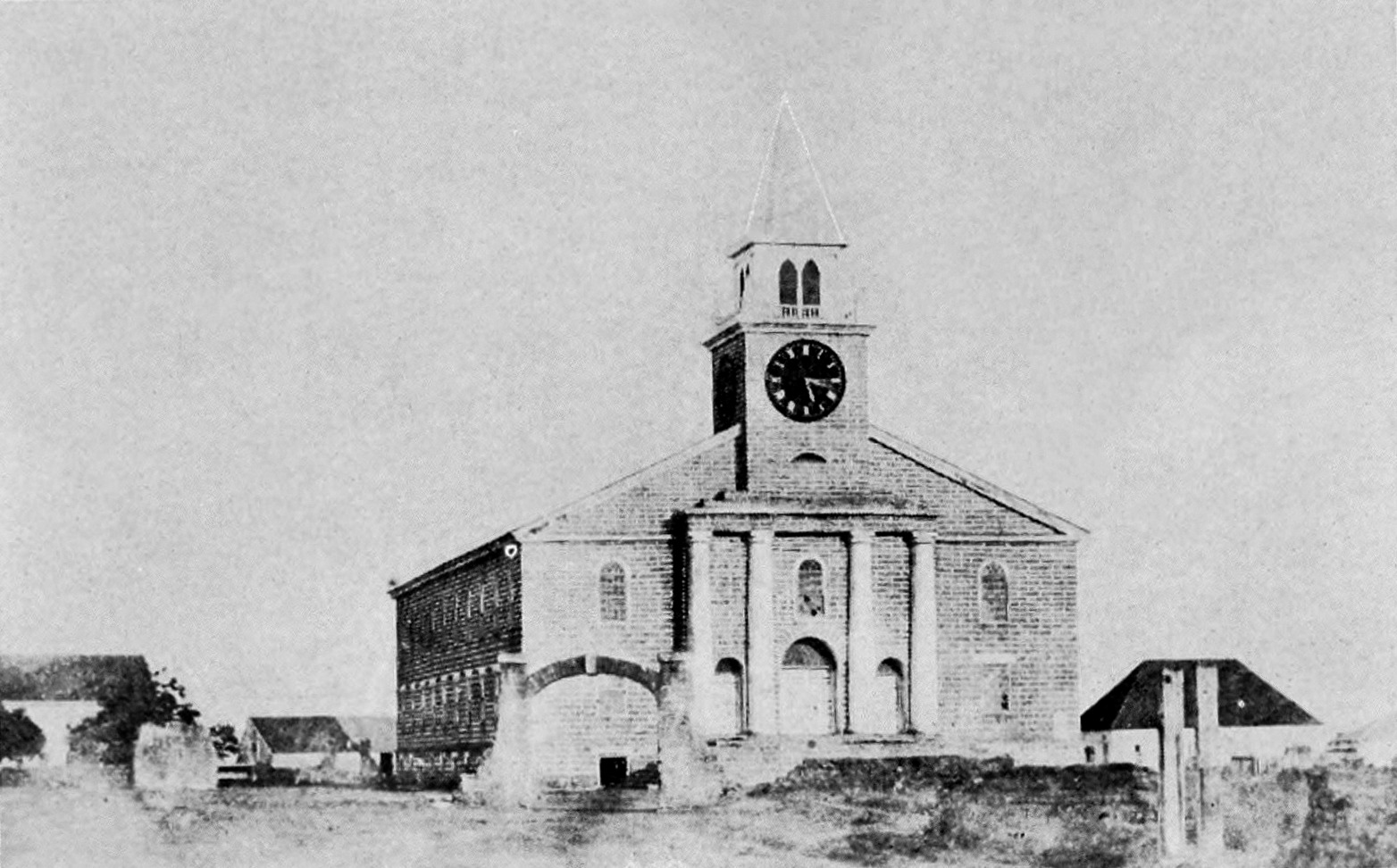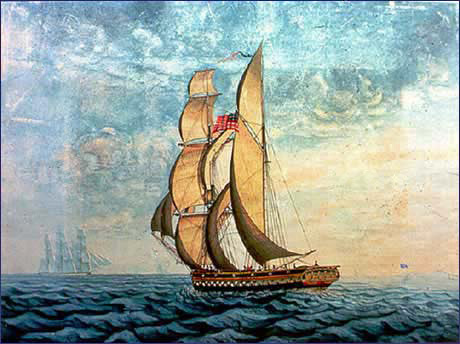|
Haʻalelea
Levi Haʻalelea ( – October 3, 1864) was a high chief and member of the Hawaiian nobility during the Hawaiian Kingdom. He initially served as a kahu (royal caretaker) and konohiki (land agent) for High Chief Leleiohoku, one of the grandsons of Kamehameha I. He later became abHulumanu (court favorite) in the royal court of Kamehameha III and eventually served as Chamberlain for the court. He married Kekauʻōnohi, the granddaughter of Kamehameha I. These connections to the ruling dynasty gave him access to vast landholding during the land division of the Great Mahele in 1848. Active in politics, he was a member of the Privy Council of State and served in the House of Nobles. In later life, he helped the early Mormon missionaries to the islands by leasing them land and eventually converted to that faith. Early life and family Born circa 1822 in Lahaina, Maui, his father was Haʻaloʻu, the Governor of the island of Molokai under Prime Minister Kalanimoku, and his mother was Kip ... [...More Info...] [...Related Items...] OR: [Wikipedia] [Google] [Baidu] |
Kekauʻōnohi
Keahikuni Kekauʻōnohi (c. 1805–1851) was a Hawaiian high chiefess who was a member of the House of Kamehameha. She was granddaughter to King Kamehameha I and one of the wives of Kamehameha II. Her Christian name is disputed; it is given as Mikahela in the 1848 Mahele Book and as Miriam in later sources. Biography She was born circa 1805 at Lahaina, Maui. Her father was Kahōʻanokū Kīnaʻu. Her mother was Kahakuhaʻakoi Wahinepio, sister of Boki and Kalanimoku and granddaughter of Alii Nui, Kekaulike of Maui. Her father was a son of Kamehameha I and his wife Peleuli, daughter of Kamanawa, one of the royal twins. She married her uncle Kamehameha II. She was one of his five wives. Others were Kamāmalu, Pauahi, Kīnaʻu, and Kekāuluohi. She was the youngest, but Kamāmalu was Liholiho's favorite. She was at the famous meal when the '' kapu'' system was overturned in 1819, known as the ʻAi Noa. After Liholiho's death in London, she went to Kauaʻi to live with her ... [...More Info...] [...Related Items...] OR: [Wikipedia] [Google] [Baidu] |
Haʻalilio
Timoteo or Timothy Kamalehua Haʻalilio (1808 – December 3, 1844) was a royal secretary and first diplomat of the Kingdom of Hawaii. He is best known for helping Hawaii in gaining recognition from Britain, France, and the United States as an independent sovereign nation. Life Haʻalilio was born early in the 19th century, probably 1808. He was the son Koeleele (or Koelele), and his wife Kipa, in some accounts Eseta (Esther) Kipa. He was the half-brother of Levi Haʻalelea, who later became a husband of Princess Kekauōnohi. He was of the aliʻi class or Hawaiian nobility. He was included in the first English school set up by Hiram Bingham I in Honolulu around April 1821. In 1823 William Richards joined the mission, and became a teacher and friend for the rest of his life. After learning of the death of King Kamehameha II in 1825, Haʻalilio was selected to be the royal secretary of King Kamehameha III. Jean Baptiste Rives who had served as Kamehameha II's secretary had been ... [...More Info...] [...Related Items...] OR: [Wikipedia] [Google] [Baidu] |
Kawaiahaʻo Church
Kawaiahaʻo Church is a historic Congregational church located in Downtown Honolulu on the Hawaiian Island of Oʻahu. The church, along with the Mission Houses, comprise the Hawaiian Mission Houses Historic Site, which was designated a U.S. National Historic Landmark (NHL) in 1962. and In 1966 it and all other NHLs were included in the first issuance of the National Register of Historic Places. At one time the national church of the Hawaiian Kingdom and chapel of the royal family, the church is popularly known as Hawaiʻi's Westminster Abbey. The name comes from the Hawaiian noun phrase ''Ka wai a Haʻo'' (the water of Haʻo), because its location was that of a spring and freshwater pool of a High Chiefess Haʻo. It has also been called the "hale pule lahui", the Great Stone Church, the Hawaiian Tabernacle (luakini), the Mother Church, the Kingʻs Church, the Kingʻs chapel, and the "Aliʻi Church". Today, Kawaiahaʻo continues to use the Hawaiian language for parts of the ... [...More Info...] [...Related Items...] OR: [Wikipedia] [Google] [Baidu] |
Enoch Wood Perry Jr
Enoch () ''Henṓkh''; ar, أَخْنُوخ ', ommonly in Qur'ānic literature ' is a biblical figure and Patriarchs (Bible)">patriarch prior to Noah's flood, and the son of Jared (biblical figure), Jared and father of Methuselah. He was of the Antediluvian period in the Hebrew Bible. The text of the Book of Genesis says Enoch lived 365 years before he was taken by God. The text reads that Enoch "walked with God: and he was no more; for God took him" (), which is interpreted as Enoch's entering heaven alive in some Jewish and Christian traditions, and interpreted differently in others. Enoch is the subject of many Jewish and Christian traditions. He was considered the author of the Book of Enoch and also called the scribe of judgment. In the New Testament, Enoch is referenced in the Gospel of Luke, the Epistle to the Hebrews, and in the Epistle of Jude, the last of which also quotes from it. In the Catholic Church, Eastern Orthodoxy, and Oriental Orthodoxy, he is venerated a ... [...More Info...] [...Related Items...] OR: [Wikipedia] [Google] [Baidu] |
Molokai
Molokai , or Molokai (), is the fifth most populated of the eight major islands that make up the Hawaiian Islands, Hawaiian Islands archipelago in the middle of the Pacific Ocean. It is 38 by 10 miles (61 by 16 km) at its greatest length and width with a usable land area of , making it the fifth-largest in size of the main Hawaiian Islands and the List of islands of the United States by area, 27th largest island in the United States. It lies southeast of Oahu, Oahu across the wide Hawaiian islands channels, Kaʻiwi Channel and north of Lanai, Lānai, separated from it by the Hawaiian islands channels, Kalohi Channel. The island's agrarian economy has been driven primarily by cattle ranching, pineapple production, sugarcane production and small-scale farming. Tourism comprises a small fraction of the island's economy, and much of the infrastructure related to tourism was closed and barricaded in the early 2000s when the primary landowner, Molokai Ranch, ceased operations due ... [...More Info...] [...Related Items...] OR: [Wikipedia] [Google] [Baidu] |
Kamehameha II
Kamehameha II (November 1797 – July 14, 1824) was the second king of the Kingdom of Hawaii. His birth name was Liholiho and full name was Kalaninui kua Liholiho i ke kapu ʻIolani. It was lengthened to Kalani Kaleiʻaimoku o Kaiwikapu o Laʻamea i Kauikawekiu Ahilapalapa Kealiʻi Kauinamoku o Kahekili Kalaninui i Mamao ʻIolani i Ka Liholiho when he took the throne. Early life Kamehameha II was born in the month of Hanaiaʻeleʻele (corresponding to November) 1797 in Hilo, on the island of Hawaiʻi, the first born son of Kamehameha I with his highest-ranking wife Keōpuolani. It was originally planned that he would be born at the Kūkaniloko birth site on the island of Oʻahu but the Queen's sickness prevented travel. Given in care to his father's trusted servant Hanapi, who took the child to rear him in the lands of Kalaoa in Hilo Paliku, he was taken back, after five or six months, by his maternal grandmother Kekuʻiapoiwa Liliha because she felt he was not getting ... [...More Info...] [...Related Items...] OR: [Wikipedia] [Google] [Baidu] |
Kealiʻiahonui
Aaron Kealiʻiahonui (1800–1849) was member of the nobility of the Kingdom of Kauaʻi and the Kingdom of Hawaii. He is often called Keliʻiahonui, a contraction of Kealiʻiahonui. His name was given to him by his father Kaumualiʻi in honor of King Kamehameha I's peaceful takeover of Kauai and means the "king whose strength is attained through patience". Family life Kealiʻiahonui was born August 17, 1800. His father was Kaumualiʻi, the last ruling King of Kauaʻi. His mother was Kaʻapuwai Kapuaʻamohu. His father agreed to become a vassal to Kamehameha I in 1810, so he would never become a ruling monarch. In 1821 his father was forced into exile, and to emphasize the submission, marry Queen Regent Kaʻahumanu. After his father died in 1824, and his half-brother Humehume led a failed rebellion, Queen Kaʻahumanu forced Kealiʻiahonui into a similar relationship. Kealiʻiahonui gave up his first wife, Deborah Kapule, symbolically married Kaʻahumanu, and there were no more ... [...More Info...] [...Related Items...] OR: [Wikipedia] [Google] [Baidu] |





